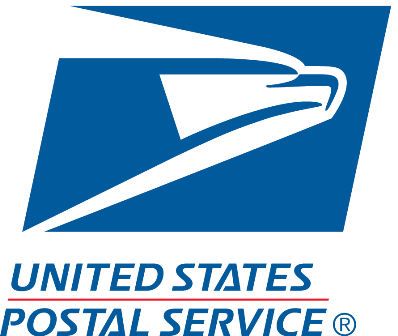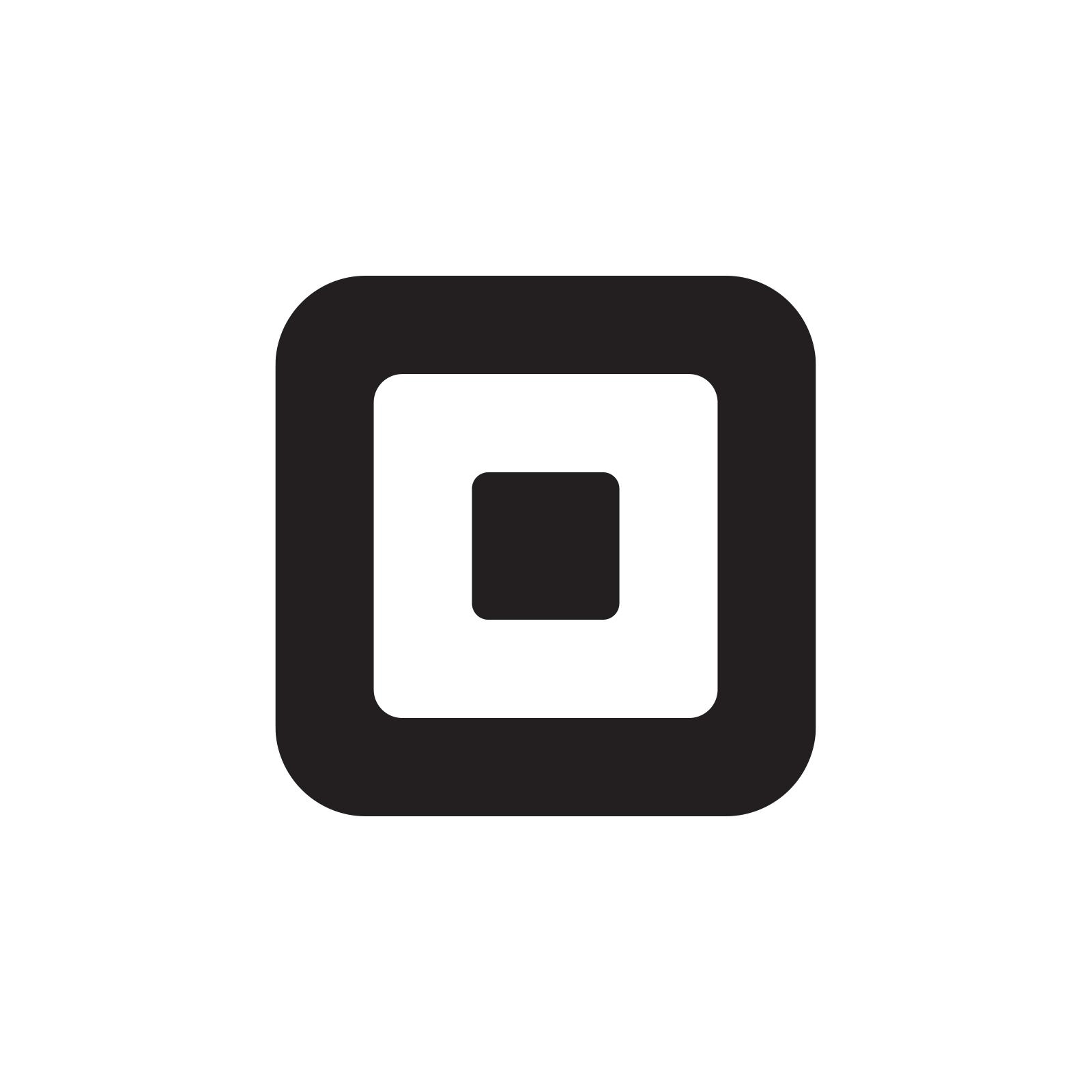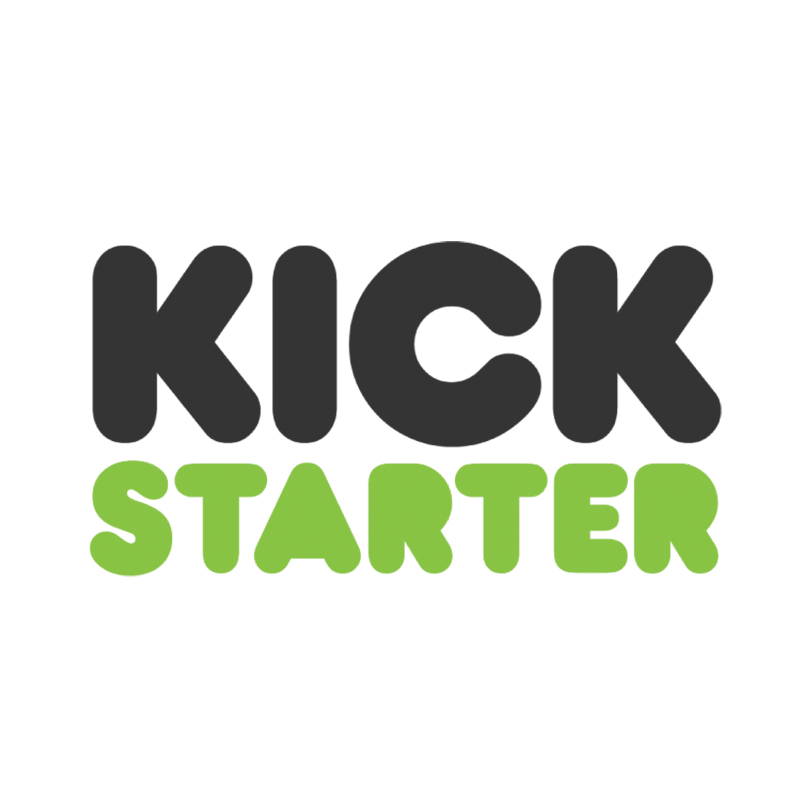How We Started A Successful Hot Sauce Brand
Hello! Who are you and what business did you start?
Hello! My name is Mustafa Mannan, co-founder and co-owner of Trini Pepper Sauce by Findlay Food Group llc. Undergrad friends and I started producing two varieties of sauce, mild [also known as “Original”] and hot, five years ago.
The sauces comprise a fresh blend of Scotch Bonnet and Scorpion peppers, garlic, cultantro and other ingredients. These ingredients provide a flavor-forward sauce that’s followed by a creeping heat. Customers often comment on the fruity flavor and full body of the sauce, which is attributed to the use of pimento and papaya. Also, the sauce has a low vinegar and sodium content compared to other hot sauces. Customers compliment this feature because it allows them to indulge and enhance the flavor of their meal, without overpowering it.
Today, the sauce is sold in specialty stores in Raleigh and Washington DC, with the majority of sales coming from our online store front. All in all we are averaging $3000/month in revenue.

What's your backstory and how did you come up with the idea?
My family is from the islands of Trinidad and Tobago, home to a distinct and exotic cuisine.
We launched a Kickstarter campaign that successfully raised over 32K, surpassing our 25K goal.
Served alongside these foods is a pepper sauce unique to every Trinidadian and Tobagonian family. My family’s pepper sauce recipe has been passed down five generations.
Each trip to the islands, my grandmother, Joan Findlay, sent me home with the sauce to share with friends in North Carolina. After receiving much praise, I became excited with the idea of sharing it with the world!

In 2015, a few close friends and I launched a Kickstarter campaign that successfully raised over 32K, surpassing our 25K goal. The Kickstarter funds enabled us to import the peppers from Trinidad, manufacture the first batch, and distribute domestically and internationally.
The idea came about because of the additional restrictions bringing perishable goods into the USA. My friends and family that loved the hot sauce had to place orders to my grandma in Trinidad, and then I would have to bring them back after my visits. The amount of orders increased which led me to come up with an idea to try and make the sauce domestically. I never started a company before and thought it would be cool. I have a lot of friends in the entrepreneurial space which also led me to taking the idea seriously.
Take us through the process of designing, prototyping, and manufacturing your first product.
I was fortunate enough to have a baseline recipe from my grandmother to start off with. So, the first thing I did was beg and plead with my grandmother to share the family recipe with me.
I knew initially that I wanted the product to be made at a mass scale for retailers. So we called a couple of co-packers, contract packagers, that informed us of all of the requirements to produce and bottle Trini Pepper Sauce.
A co-packer is a company that provides manufacturing and/or packaging service for products. These services may be beneficial if you want to produce items on a large scale and/or don’t have the required facilities to manufacture your product for retailers. It is important to have a transparent co-packer and a great working relationship since they will be scaling up your recipe and will become your largest expense.
So, after running an initial large scale production of my sauce, it was paramount that I was satisfied with the color, texture, and taste of the sauce. It might take several runs before the co-packer meets a client's product specification. Once, the sauce's large scale recipe was perfect, I was able to place orders for additional product while being minimally involved during the manufacturing process.
This may or may not be of interest depending on the scale desired for a product launch, or cost and availability of facilities and certifications required for manual production. The most important requirements for my co-packer encountered were: scalable recipe with exact quantities, business license, liability insurance, and the tax number.
Look at your business endeavor as journey instead of a job. Embrace the succession of good and bad experiences. I look at it as the painting of the abstract of my life.
First, I got all the ingredients and general process together and I adapted it to fit the FDA guidelines. This involved a lot of small batch making in my apartment to the disdain of my roommates. I created a couple of recipes with exact quantities and sent them off to a food laboratory to get our recipe and process approved. We needed to have a certain pH range, temperature, bottling procedures, and ingredient list. This was an iterative process with the food laboratory. After we had our final recipes approved we got our FDA process letter and nutritional facts.


Once I had the nutritional facts and ingredient listing I could start work on the packaging. I encountered a BBQ sauce and really loved their packaging design. I reached out and got put into contact with a graphic designer.
Part of the creative process was forming a general idea of how we wanted the product to look and the inspiration behind the product. We wanted to showcase the look of the sauce and have a general island vibe that wasn’t too gimmicky.
We provided the dimensions, sample bottles, UPC codes to our designer to work with. There was a lot of collaboration with the designer, co-packer and label manufacturer to get the packing done. Approvals for artwork and machining requirements to name a few.


The next step was selecting the right co-packer. The recipe is very unique compared to other hot sauces on the market. I solicited a lot of different companies but ended up choosing one close in proximity to where I lived. I worked with them to develop the large scale recipe based on the small batch recipes we made previously.
This was a bit of a challenge as some of the ingredients are quite unique and aren’t readily available in large quantities or distributed by food/ingredient vendors. We attempted to substitute some of the ingredients with more readily available ingredients but ultimately I wasn’t satisfied with the product. This was almost the ending of the venture until I started to explore importing.
I researched the requirements for importing fresh produce into the United States. You are limited in what is approved to import and the origin country. Luckily, Trinidad and Tobago was approved and I had family connections to steer me in the right direction to placing a large order. I needed to get an import permit, customs broker, commodity forwarder, and exporter lined up to make the large scale batch possible.

The large scale batch was quite a feat as it was my first time doing it. There are a lot of moving parts to the operation. We ran into a couple hiccups such as ingredients not being sent, shipping delays, product sourcing, and timing. The timing had to be precise because we use only fresh ingredients. The batches were delayed a couple of times to get the timing down correctly.
The day of the batch I had to be there to taste and approve the final recipe. This can be a little difficult because you can always add but cannot subtract ingredients. And when doing it on a large scale you don’t want to end up with 55 gallons of product that you cannot use. It was quite a relief when the final product was finished and ready to sell.
Describe the process of launching the business.
I decided that we were going to do a Kickstarter to gain funds for the product launch. The first batch we made sample bottles and had a sample campaign to build momentum. We made 1 fluid ounce bottles and gave them away for free.
Plan out your Kickstarter campaign thoroughly. Don’t be afraid to wait to get everything right before launching.
We designed our initial website and funneled the free sample sign up there. The sample campaign we made a survey to get things like mailing addresses, product feedback, and to create an email mailing list. We posted the sample campaign on reddit and other forums. The post went viral quickly with the sign-ups and we hit our cap of 10,000 samples rather quickly in a matter of minutes. What we didn’t think of beforehand was how expensive the shipping would be for all the samples. We ended paying for all the samples, packaging, and shipping as well as all of our other start-up costs.

The next step was creating the Kickstarter campaign. We needed a really well put together campaign to recoup our sample campaign cost.
We studied all of the very successful kickstarter campaigns and deduced the common ideas among them. Some of the Kickstarters that were the most helpful were: caps. hot seven, FYM Hot Sauce, and Red Hot Motor Oil.
All of these hot sauces had an awesome intro video and different levels of rewards. Furthermore, we learned from studying these Kickstarters that around 90% of the campaign rides on pre-campaign preparation and that money can be lost by not pricing rewards with shipping cost in mind especially international shipping.
Since the product was a family recipe the story was already there for the most part. We hired a videographer and flew to Trinidad and Tobago to shoot the video. We involved family and really immersed the videographer in my family and the culture of Trinidad and Tobago so he could get a feel for the vibe we were going for. That in turn led into an awesome video which surely contributed to the success of our campaign.
We researched hacks to make our campaign go viral and to be selected as a kickstarter favorite to be promoted. The hacks included doing a promotional free sample through reddit. We learned from caps. hot seven that a four month buffer period between the initial promotional post and kickstarter post on reddit is effective in generating Kickstarter traction and we learned from FYM Hot Sauce that cross posting between subreddits also helped in drawing additional demographics to the Kickstarter.
After the kickstarter page was finished we launched the product by email blasting our list that we obtained from doing the sample campaign. People loved the product from tasting the samples and were waiting to order as soon as we launched. Our campaign was quite successful and we used all what we learned from the sample batch to produce our subsequent batches for our kickstarter backers.
Some of the biggest lessons learned from the launch is to plan out your campaign thoroughly. Don’t be afraid to wait to get everything right before launching. Make sure you have enough margins and include shipping costs separately from the product cost. I would limit international orders as the shipping can prove to be difficult and expensive. Before your launch you should have all the processes in place to make the product in large quantities before taking the pre-orders on kickstarter. We already had all of this in place beforehand and still ran into some difficulties fulfilling by the correct date. We ended up having to ship out two different batches as some of our pre-orders were Christmas presents.
After, our kickstarter campaign was fulfilled the website was launched. We got some of our first online store customers from repeat buyers, word of mouth from the sample and kickstarter campaigns. It is important to maintain momentum and have a plan for the future after the kickstarter campaign has ended. You should always be planning for what’s next with as much foresight as possible.
Since launch, what has worked to attract and retain customers?
Since launch, our strategy to find and retain our customer base has taken on a trial and error approach in which we refine the methods that show positive feedback. We have participated in variously themed vending events, paid for promotions on social media platforms, were in a subscription box, etc. What we have found to be the most helpful thus far is consistent and thematic social media post, hot sauce themed vending events, and free local demos and pop-ups.
Consistent social media posts have generated a more interactive following that has been leading to more online storefront visits. Also, we have found meme themed content and giveaway post to generate greater reach and engagement which have translated into sales. Coupling the meme or giveaway post with a holiday or national day helps with reach as well because of the additional hashtags we can add to the post.


Our initial thoughts on vending events were to stand-out. So we thought being one of several hot sauces at a vending event was not ideal. So we participated in Caribbean themed events, such as Carimask and Around the World Cultural Food Festival, and served prepared food, such as Trini Chow, marinated chicken, vegetables, etc. Although, we sold enough to cover cost, our conversion rate (i.e. turning tasting into sale/ returning customer) was not great mostly because we encountered people that were not hot sauce lovers.

After participating in a hot sauce vending event in North Carolina and selling 204 bottles in a few hours, it became clear that that hot sauce themed events presented our ideal market which resulted in a better conversion rate. Also, we found we did not have to serve prepared food for these tasting since people were only interested in the taste of the sauce, enabling us to cut cost for these vending events.

Lastly, doing demos at specialty stores that Trini Pepper Sauce is shelved at and doing free pop-ups holiday bazaars and modern office spaces like WeWork has proven to be promising.
Not only do we make sales but we make valuable contacts in the communities of Raleigh and Washington DC where we are based. These contacts have connected us with a subscription box, gotten us featured in a magazine, and shelved at the stores we are currently in.
How are you doing today and what does the future look like?
Today, we have four people dealing with the day to day operations part-time. Three of which are new partners handling operations in Washington DC.
We are seeing profits almost every other month, mostly during spring, summer, and holiday months. This is attributed to the sales and marketing we receive from the additional vending events and holiday popups during those months.
Losses have been experienced in our most recent manufactured batch because of increased production cost. Flooding in Trinidad led to shortages in scotch bonnet and scorpion peppers which led to our order of peppers not being filled. We found substitute pepper sources in the states, but at an increased cost. We have a dependable copacker in a Elizabethtown, NC that does a great job with our 4000 bottle batches which we are running two times a year now.
We are trying to improve online sales by refining social media marketing. Our marketing strategy has been governed by a media campaign with four themes: food, promotional, collaboration, and operational media.
We are posting 2-3 times a week and tracking what post and themes are most effective in garnering followers, interaction, and sales.
We are hoping to do a new fruit infused sauce in the near future. I am working on recipes that have mango and pineapple. I'm hoping to start testing during in-store demos this summer.
Our short term goals are to get into a few more store fronts and to double our batch production to 8000 bottles. Long term we want to start growing our own peppers to supplement peppers we import from trinidad, and copacking in the same city or state we grow the peppers. Doing so would cut our production cost significantly. Also, it would be great if we could all quit are day jobs to work on the sauce full time.
Through starting the business, have you learned anything particularly helpful or advantageous?
This business has taught me so much about the inconsistency of sourcing raw materials. Especially when dealing with the unforeseeable circumstances of flooding and incorrect shipping quantities that affected the production of the sauce. I learned through these experiences it always helps to have back-up sources for raw materials. We have even started working on growing our own peppers in North Carolina.
We have learned B2B sales are more difficult than they seem. Not only do you need to want to make the sale, but you have to be persistent even after you have done everything to deserve the sale. We have found that breaking up the sales pitch to accommodate multiple store visits simplifies task expected of busy buyers and allows us as salesman to be persistent without being overbearing to the buyer. First visit, we like to go to a store and appear to be looking for a product, and then bring up the pepper sauce in casual conversation with a store employee and/or manager. On the second visit, we bring the sauce and hopefully get them to try it on the spot.
If not, we give them a week or two, and return for a third visit to see what they thought of the sauce. If they like it, we send them an email with the price sheet the next day. We wait another week or two for a response, and if none is received we pop in for a fourth and possibly final visit to gage interest in moving forward with an order. Again, this approach gives us as salesmen a relentless purposeful reason to continue the pitch.
We have also learned that opportunity can come at any time so we always have to be ready even in the least auspicious moments.
What platform/tools do you use for your business?
We use Shopify for our online store.
MailChimp for email marketing.
Instagram (FB and Twitter) for marketing, to stay connected with customers, and sharing the vibe of Trini Sauce.
G Suite is probably the most useful productivity tool for the way our team collaborates and shares task. It lets us quickly connect when were not all at the same location and has essential spreadsheet, word processing, callender, and file transfer functionality.
IFTTT allows simple internet tasks to be automated, eliminating some of the online druggery involved with social media.
Trello a great way to manage all the small projects that are floating around. You can set reminders and have the involved people automatically updated whenever there is a new development with one of their tasks.
Advice for other entrepreneurs who want to get started or are just starting out?
I would advise entrepreneurs just starting out to take as much time as possible to make sure they lay good operational foundation. I have found the time and opportunities squandered when partners are stuck developing a process or system that should have already existed. For example, we had to develop a system around conducting our marketing campaigns when the time could have been used to approach grocery stores and restaurants.
Also, would recommend looking at your business endeavor as journey instead of a job. Every business experiences unexpected ups and downs that will bring you joy and/or knowledge that this is not the business for you. Embrace the succession of good and bad experiences. I look at it as the painting of the abstract of my life.
Where can we go to learn more?
- Website: trinipeppersauce.co
- Instagram/Facebook: @trinipeppersauce
- Twitter: @TriniSauce1
If you have any questions or comments, drop a comment below!

Download the report and join our email newsletter packed with business ideas and money-making opportunities, backed by real-life case studies.

Download the report and join our email newsletter packed with business ideas and money-making opportunities, backed by real-life case studies.

Download the report and join our email newsletter packed with business ideas and money-making opportunities, backed by real-life case studies.

Download the report and join our email newsletter packed with business ideas and money-making opportunities, backed by real-life case studies.

Download the report and join our email newsletter packed with business ideas and money-making opportunities, backed by real-life case studies.

Download the report and join our email newsletter packed with business ideas and money-making opportunities, backed by real-life case studies.

Download the report and join our email newsletter packed with business ideas and money-making opportunities, backed by real-life case studies.

Download the report and join our email newsletter packed with business ideas and money-making opportunities, backed by real-life case studies.


























